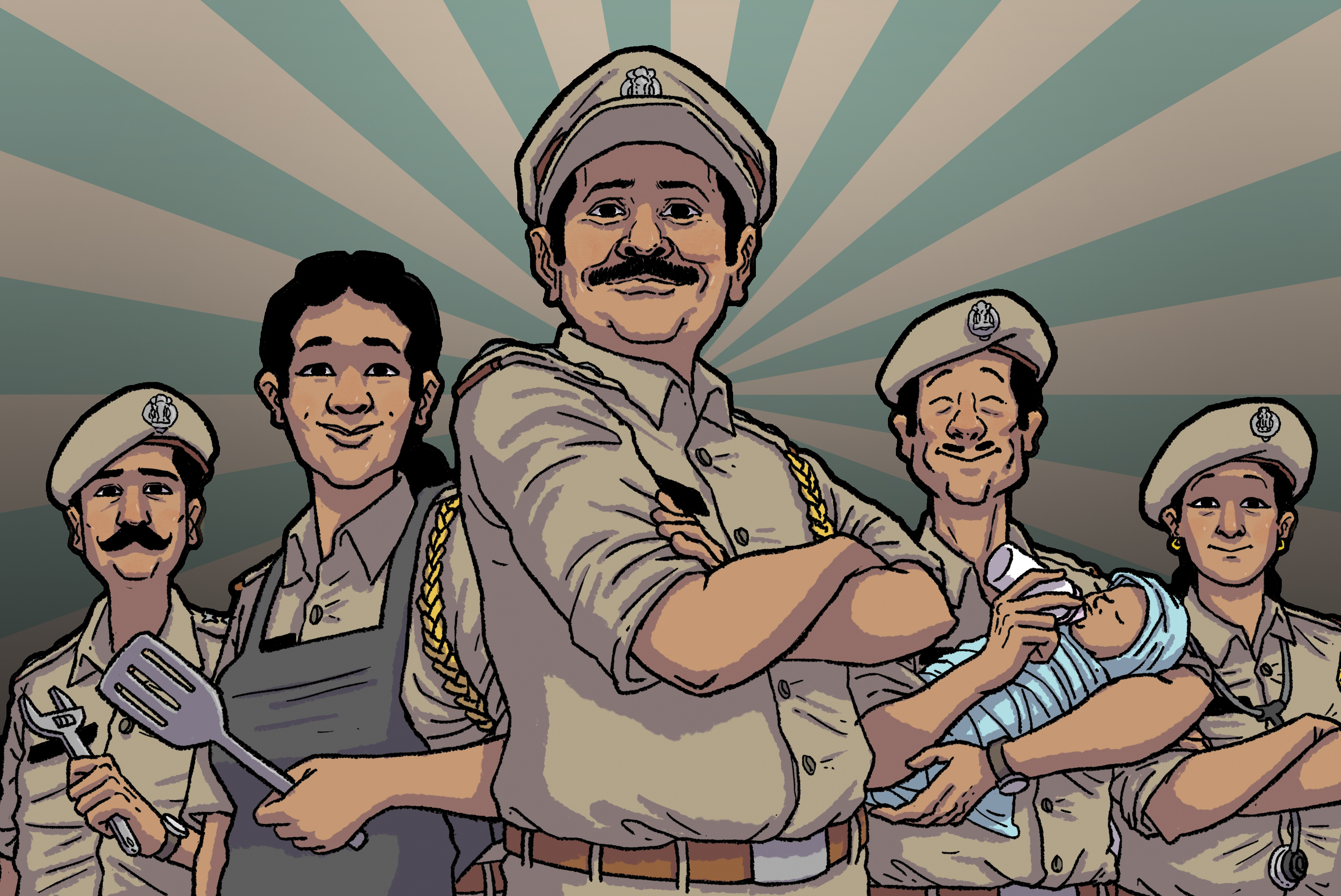With ambulance drivers on strike, PCRs have become labour rooms on at least 12 occasions
Twelve children in Delhi will be able to boast that they were born in Police Control Room (PCR) vans. That’s a few years later, when they are capable of understanding how births take place and how a moving vehicle is an unusual place in to start one’s life.
The manner in which Pooja and Asima gave birth can only be imagined as painful, uncomfortable, and nerve-wracking, but that is probably all births. What sets them apart is that all these emotions and physical distress were experienced in the back of a PCR van— delivering their babies inside the vehicle which had come to their rescue.
They are two of the 12 women who gave birth in a police car this year in Delhi, while there were 57 others who made it in time to a hospital, riding a PCR van.
But what about ambulance service? Why not call them? That’s because the Centralised Accident and Trauma Services’ (CATS) contractual employees had been on strike for months. This saw less than 100 CATS vehicles plying on the roads, when there should have been 265. Their demand was permanent jobs, payment of dues and benefits.
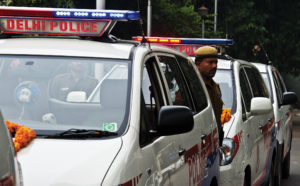
In the second week of September, the strike was called off after 75 days, but when Pooja went into labour on October 14, there still wasn’t any ambulance to come and help her.
According to the family, they had called for the ambulance twice but no one answered and the emergency number 100 was their only hope. It took the PCR around 10-15 minutes to reach Pooja’s home in Najafgarh.
But let’s start from the beginning of that day. The 27-year-old, now mother of three, woke up early to go and see a doctor at the Rao Tula Ram Memorial Hospital in Jaffarpur, on the outskirts of West Delhi. Heavily pregnant, she got up on the motorcycle with her father driving and mother in tow. “I reached the hospital at 7 am and got in the queue to get my registration done. The number was 133”, Pooja tells us. By the time her turn came to be seen by the doctor, it was already 1:30 pm. “He only touched my belly to check how I was doing and told me to come back in three days”.
She left. With her uncle coming to visit them at the hospital there was no space on the bike, Pooja got on a bus to go back home. “It was 3:30 pm by then so I told my mother I’ll go home and have my lunch. But 10 minutes later, my pain began”, Pooja tells us as her mother Vineeta and aunt Shashi join us in her one-room flat which acts as a kitchen, living room and bedroom.
Jaiveer, Pooja’s husband is put to the task to make tea, as the ladies speak about that harrowing day. “I rushed to my daughter’s home along with Shashi.” When the vehicle came, she was made to lie down in the back. But the 10-km ride proved to be far too long.
Pooja’s mother says the birth took place near Mitraon Gaon, “I took care of my daughter while Shashi took the baby into her arms.” The PCR personnel had noted the time of birth and also informed the hospital about their impending arrival.
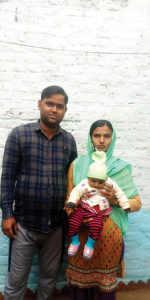
“They didn’t stop the car, the police personnel instead made announcements over the microphone system that a woman has given birth and needs to be immediately taken to the hospital.”
People cleared the way, thankfully, all the three women recall. Once they reached, the first priority of the doctors was to cut the umbilical cord, after which Shashi went inside with Pooja and her newborn son to the ward; the mother stayed back to clean the van, as asked by the personnel. But she has no qualms about it. “She’s my child, of course I would have to clean up”.
While that day is put behind her, Pooja would want the system to change in government hospitals —where a woman nine months pregnant, would not have to wait hours on end to meet the doctor. Where the check up would not simply be touching the belly for signs of an impending labour.
“Even after giving birth when I was admitted at the hospital, I got fever but they first refused to give a blanket”, Pooja says while her mother adds that someone even said they should have brought a blanket along. “The blanket we had brought was ruined during the childbirth and had to be thrown… These hospitals don’t listen to us poor people”, Pooja says.
For her and her husband, life is lived on basics. He makes Rs 12,000 a month working for a private company hired to look after cargo at IGI T3 Airport.
They have been living in the flat, which has a communal water supply and washroom for the past five years now. “We got married in 2013, but I have been living in this area since I was a child. Everyone knows each other so I don’t feel like moving”. What makes it harder is that Jaiveer works night shifts — having family around and people she knows is a security measure.
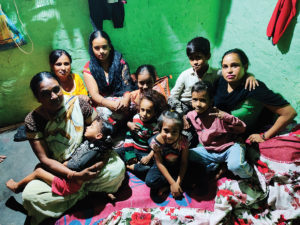
“He started working here three years ago. Before that too he worked in the same line but for a different company”, Pooja tells us, while her husband, a man of few words, sits and looks on. When his second daughter Ananya was born— for her too Pooja had to get the help of a PCR van at night — Jaiveer had to take leave and was thus terminated.
Their children study in private schools, the flat is on rent for Rs 1,300, and they get a separate electricity bill which comes to about Rs 500-700 per month. A refill gas cylinder has to be ordered every two months. Pooja goes to fetch “drinking water” or what they call “sweet water” early in the morning on alternate days. She applied for a ration card some five years ago but has yet to receive the facility.
For them, being able to afford private facilities is out of the question. She isn’t aware of any other benefits provided by the government which she is eligible for.
We went to meet the doctors of Rao Tula Ram Memorial Hospital, which sees about 400-500 patients in antenatal and postnatal OPD every day. They also handle 20-30 deliveries on an average, admittedly on some days far fewer of about 10, like the day we met them on — a public holiday.
A Senior Resident doctor, Anand Kumar Sinha had conducted four deliveries and would likely see another 5-6 by evening. “No one will have complaints, we work very hard”, the doctor in his 2nd term of work at the hospital tells us.
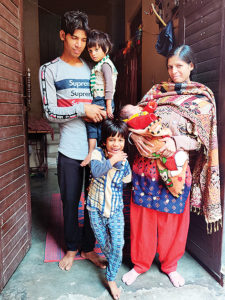
When we raised a conversation about Pooja’s predicament, he said one of the reasons may have been that since it was her third child, the delivery happened sooner that it would have, thus giving them no time to reach the hospital.
But the lack of ambulances is something he completely concedes with, as does Junior Resident doctor Pradeep.
“It has been almost six months since the strike began. Even to reach the hospital they take over half an hour”, this is far too long in a critical situation. Ambulances are required to be parked at the hospital to shift patients in need of specialised care.
And when patients are referred to Deen Dayal Upadhyay Hospital (DDU) or Safdarjung Hospital,“It takes over half an hour to reach…there needs to be a centre closer to us”, Dr Sinha points out.
Operations that need to be conducted after 4 pm are also referred to DDU. So, when the patient does not get a CAT ambulance, they would have to go for a private one, which are more like taxis, without the complete facilities of an ambulance. The 21-km stretch on this would cost the patients Rs 1,000-1,500.
Presumably, if it’s one with all the life support facilities it would cost double that, if not more.
For women coming to such hospitals, having the requisite money to avail such vital facilities is scarce. “This is the first thing that should be changed and looked into. They are poor people and mostly come on bikes. When a woman is fully dilated how can she come on bike? When they call an ambulance, they say it will take an hour to reach them, their only other option is to call the PCR”, adds Dr Pradeep.
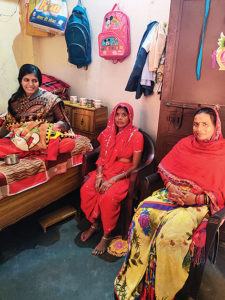
Asima, another woman who gave birth to her second child in the PCR van, was in fact being taken to the hospital by metro when she was stopped.
We meet Asima’s mother, Shabana, and her extended family at their home in Sonia Gandhi camp, Naraina.
Asima has already returned to her marital home of Bareilly, so her mother is left to recount the moments of that day.
She had asked her daughter to come and stay with her for a few months before she gave birth. “Asima came when she was around 5-6 months pregnant. I took a home on rent then because there were too many people here for us to accommodate another.” Shabana’s mother owns the couple of rooms they live in, each one cramped with its family members.
Shabana took Asima and her two younger children — 15-year-old Khushboo and 10-year-old Heena — and moved to Tigri Kalan. On the evening of September 7, Shabana got a call from her eldest, “It was 7pm and I was almost home when Asima called to say she was in a lot of pain”.
She rushed to her daughter’s side and decided to take an auto to the Tigri Kalan Metro station thinking she could take her to Lady Harding Medical College in central Delhi.
The CRPF personnel stationed there didn’t let them through, seeing Asima’s condition. They instead called the ambulance and the PCR at the same time, hoping one would come before the other on time. “The entire time the police personnel were so nice to us… the lady personnel hugged my daughter and sat with her and kept assuring her that everything would be fine”, says Shabana.
The PCR van showed up and they were off. “The policeman asked if we want to go to a government or private hospital. I said government, so they kept driving…”. But Asima had her child moments away from a private hospital — Sonia Hospital — in Nangloi.
Everyone rushed to their aid and were well taken care of Shabana says, adding some words about how helpful the PCR personnel were to them. “By the time she had the child it was 9 pm. We reached the hospital and the policemen stayed till the doctors had cleaned the baby, changed the sheets for my daughter, done all the paperwork. They went out of their way to help us and also give us company…no one was there from our family”.
DCP PCR Sharad Sinha puts his team and their role as ones which “assist people in distress”. In regard to a situation where a woman is in labour, he says they cannot do much, “it is a very specialised job which no PCR or policeman will be able to do. What we do is more of a humanitarian support, providing immediate support to the lady. The families are always taken into the van so that convenience to the maximum is provided”. The most important factor is that they don’t lose time, “labour pain is such that there is always a chance of things going wrong. So, the critical thing is to not lose time…”
For Shabana, her responsibility is done, with 22-year-old Asima going back to Bareilly about two months after the birth of her second child named Ahil.
She has been looking after her children with the meagre amount that she earns from working at people’s homes, which she had to take up when her husband passed away eight years ago.
“My children were all very young then. The youngest only two…” While she managed to raise them, she could not educate her eldest Asima, who studied till only 5th grade. Her younger two are now in government schools, while she makes Rs 7,000 per month after working in two homes from 8 in the morning till 8 in the evening.
For women like Shabana, Asima, Vineeta and Pooja, things do not come easy on a regular basis. For Asima and Pooja it proved to be so even in an emergency situation.
Long queues at the hospital, the unanswered phones of the ambulance helpline, trying to take a Metro while in labour to save money…this is still the fate of many in the Capital city of the India.

